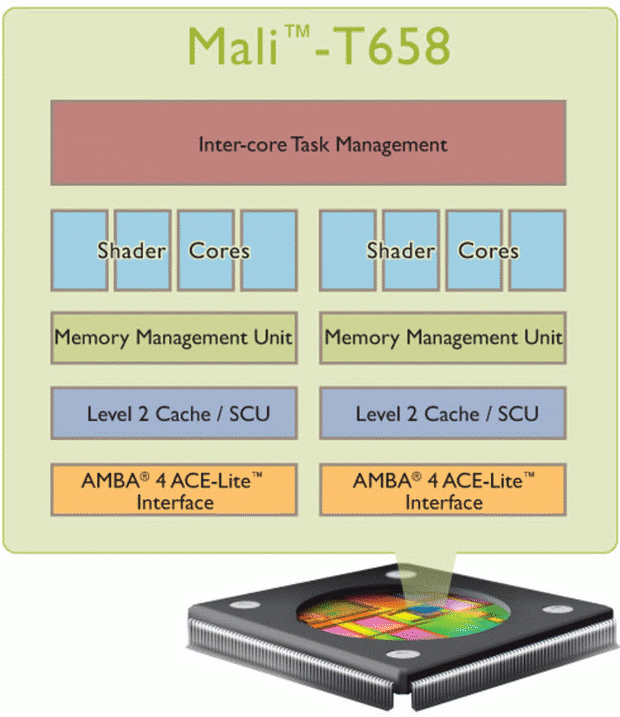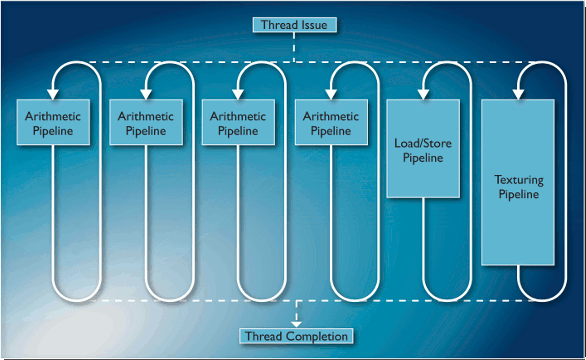About one year ago, ARM announced the Mali-T604 GPU which has yet to be used in current products. Yet today, ARM announced an even more powerful GPU called Mali-T658 in Tokyo at Japan ARM Technical Symposium.

Mali T658 is based on Midgard GPU architecture (as is Mali T604) which allows great GPGPU capabilities thanks to three types of pipeline (‘tri-pipe’) optimized repetitively for arithmetic, load/store and texturing. The GPU will also support standard graphics APIs such as Khronos OpenGL ES, OpenVG andMicrosoft DirectX® 11) as well as Compute APIs such as Khronos OpenCL (Full Profile), Google RenderScript compute and Microsoft DirectCompute.

Performance-wise, Mali-T658 has twice as many shader cores and double the arithmetic pipelines per core which means the GPU can offer up to 10 times the performance of the Mali-400 MP GPU. On the compute side, Mali-T658 provides 4 times the processing power of Mali-T604.
Mali-T658 will work with Cortex A7 and Cortex A15 processors either in standalone mode or in big.LITTLE processing mode. Mali-T658 will be able to scale with up to 8 cores to match the processing power for Cortex A15 multicore processors.
One key feature of the Midgard GPU architecture is the Job Manager – a clever little block in the GPU that takes the weight off the CPU by loading the data that the GPU needs autonomously, without requiring a big load on the CPU. This means that there won’t be software differences between the Mali-T658 and the Mali-T604 since both GPU use the same architecture.
You may wonder what to do with all this GPU processing power but people who create content will always find new ways to use up the fill-rate, triangle-rate and GFLOPS. Augmented Reality is one application that requires a lot of processing power and Mali T658 GPU will help achieving smoother AR applications.
The video below shows what kind of applications may become possible thanks to Mali-T658 GPU.

For further information, you can visit Mali-T658 page. You can also join ARM webinar entitled “Harnessing the power and flexibility of the Mali Midgard architecture” on 15 November at 10am PST.

Jean-Luc started CNX Software in 2010 as a part-time endeavor, before quitting his job as a software engineering manager, and starting to write daily news, and reviews full time later in 2011.
Support CNX Software! Donate via cryptocurrencies, become a Patron on Patreon, or purchase goods on Amazon or Aliexpress




